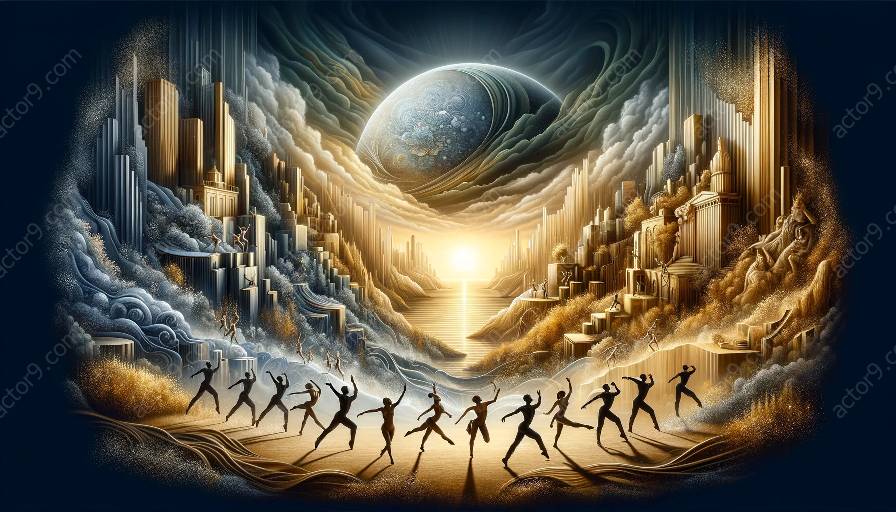Physical theatre is a powerful medium for exploring cultural heritage and traditions, often portraying social issues through captivating performances that resonate with audiences worldwide. This topic cluster delves into the intersection of physical theatre, cultural heritage, and social issues, offering a comprehensive analysis of their dynamics and significance.
The Essence of Cultural Heritage in Physical Theatre
Physical theatre serves as a living embodiment of cultural heritage, drawing from diverse traditions, rituals, and historical narratives to create compelling performances. Each movement, gesture, and expression in physical theatre reflects the rich tapestry of cultural heritage, preserving and celebrating the essence of various communities and their traditions.
Embodying Traditional Storytelling
One of the most captivating aspects of physical theatre is its ability to bring traditional storytelling to life through physicality and movement. By delving into cultural folklore, myths, and legends, physical theatre artists breathe new life into age-old narratives, fostering a deeper appreciation for the cultural stories that have been passed down through generations.
Honoring Rituals and Ceremonies
Physical theatre often pays homage to rituals and ceremonies rooted in cultural heritage, offering a visceral and evocative portrayal of traditional customs and practices. Through meticulous choreography and immersive performances, physical theatre brings forth a profound understanding of the significance of these rituals within their cultural contexts.
Exploring Social Issues in Physical Theatre
Physical theatre serves as a potent platform for examining and addressing pressing social issues, utilizing the body as a tool for expressing societal challenges, inequalities, and aspirations. The following sections highlight the ways in which physical theatre engages with social issues:
Physical Expression of Injustice and Oppression
By embodying the struggles and privileges of diverse societal groups, physical theatre provides a visceral representation of injustice and oppression. Through poignant movements and striking imagery, physical theatre illuminates the lived experiences of marginalized communities, fostering empathy and awareness among audiences.
Advocacy through Movement
Physical theatre often serves as a catalyst for advocacy, using movement and gesture to convey messages of equality, justice, and human rights. Whether addressing environmental concerns, political upheaval, or humanitarian crises, physical theatre engages in activism through the sheer power of the body, amplifying voices that seek positive social change.
Intersecting Cultural Heritage with Social Issues
When cultural heritage and social issues converge in physical theatre, the result is a harmonious blend of tradition, activism, and storytelling. Physical theatre becomes a bridge between the past and the present, intertwining cultural narratives with contemporary societal challenges to create thought-provoking performances that resonate deeply with audiences worldwide.
Reclaiming Identity and History
Physical theatre provides a platform for marginalized communities to reclaim their identity and history, often shedding light on historical injustices and cultural erasure. By intertwining traditional movements with narratives of resilience and resistance, physical theatre empowers communities to assert their place in history and confront the lingering effects of colonialism, oppression, and marginalization.
Cultural Resilience and Innovation
Amidst the complexities of contemporary social issues, physical theatre highlights the resilience and innovation embedded within cultural heritage. Artists incorporate traditional forms of movement and expression into narratives that speak to the evolving challenges and opportunities of the modern world, demonstrating the enduring relevance of cultural traditions in addressing pressing social concerns.
Conclusion
Exploring the intricate relationship between cultural heritage, social issues, and physical theatre unveils a dynamic tapestry of artistic expression and cultural significance. By delving into traditional storytelling, societal advocacy, and the intersection of cultural narratives with contemporary challenges, physical theatre continues to captivate audiences and provoke meaningful conversations on a global scale.




































